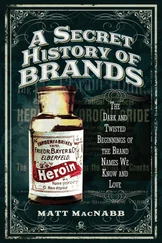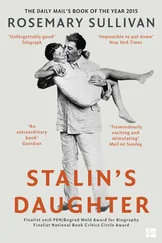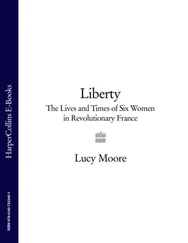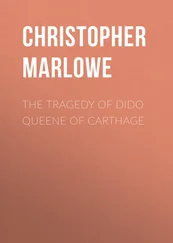Such stories linger, and this one was no doubt still being narrated with embellishment and delight by the time Christopher was old enough to listen in. Wisps from the world of adults float in to young minds; sometimes they snag and remain, perfectly preserved if not fully understood. Later we may reexamine them: odd, untarnished strands in our fabric, suddenly seen with a fuller perception. In Christopher’s case, he worked them into his plays.
Two other stories gleefully gossiped around St George’s reached the ears of the little boy who, watchful and inquisitive, was known to eavesdrop from the corner of his father’s shop, or from behind the thin walls of the family house. The first, the tale of Dorothy Hocking, happened in the year Christopher was born, but so delighted the good folk of Canterbury that it was firmly lodged in local legend for years to come.
Dorothy was comely but a little dim, and was kept in drudgery and virtual imprisonment by her mother and stepfather. They lived in the parish of Holy Cross, near Canterbury’s Westgate and next door to the tailor Robert Holmes. Between the ‘backsydes’ (back yards) of the houses there was a wall. It was built of stones and earth, bonded with hair and coated with lime or roughcast. It probably had a capping of thatch to keep off the rain, and it certainly had a hole. We know this because Dorothy Hocking’s dog had nipped through the gap and stolen a conger eel from the Holmes’s yard. Under the pretext of discussing this incident, Robert Holmes’s wife drew Dorothy ‘from her mothers busyness in hir mothers backsyde’ for a secret discussion through the hole in the wall. Dorothy had fallen in love with one Richard Edmundes, and Goodwife Holmes had a mind to help her out. It was ‘about five or six of the clock in the afternoon’. Dorothy agreed that Goodwife Holmes should send for Richard, so she could speak to him through the hole in the wall. Robert Holmes found him nearby, playing bowls in ‘the backsyde of goodman podiches house’, and brought him to the hole. By then Dorothy’s parents had gone out. Goodwife Holmes took Dorothy’s hand through the wall, and gave it to Richard to hold by the finger, asking ‘knowe youe who this is that hath youe by the finger’. Dear but dull-witted Dorothy answered ‘no not yet’. Robert Holmes told her ‘it is Richard Edmundes’, and open-mouthed she asked ‘what … he wold have with her?’. Richard replied: ‘well my wench I beare youe good will and if thow canst find it in thie harte to love me and wilbe ruled by me I will delyver thee out of thye miserie’. She answered she could ‘find it in her hart to love him above all men’, and Edmundes asked her how old she was, saying, perhaps with a fillip of flattery, ‘I thinck you bee neere hand 16 or 17 yeares of age’. This seems to have somewhat thrown Dorothy who replied ‘yea that I am, for I am neerer 20 yrs ould but my age is kept from me’. Edmundes then asked her if she was betrothed to anyone else, and when she answered ‘no’ said, ‘can you finde in your harte to forsake father and mother and all men lyving for my sake?’, and she replied with a heartfelt ‘yea’.
We are told that Robert Holmes then called his journeyman, Harry Jenkinson, from indoors to act as a witness. ‘Where and whan, Edmundes toke Dorothie by the hand throughe the hole in the wall and then said Dorothee unto Edmundes these words, viz. I Dorothee take youe Richard to my husband forsaking all other for your sake and thereuppon I give you my faith and trouthe. Then said Edmundes, in faith wench, I were too blame if I would not speak the like woords unto thee.’ He did so, and ‘called for a drinck and dronck to Dorothy’, giving her ‘an ould angell [gold coin]’ to seal the ceremony. Now that she was betrothed, Dorothy – perhaps not so dim after all – was freed of her parents’ tyranny. As soon as her circumstances had changed she broke off the engagement, bringing down a breach of contract case against herself, thus leaving us a record of her story. This droll titbit of Canterbury gossip was, of course, to re-emerge as the story of Pyramus and Thisbe in A Midsummer Night’s Dream .
The second Canterbury tale overheard by the young Marlowe, perhaps from customers in his father’s shop, perhaps as he slipped in and out of neighbours’ kitchens, centred on William Darrell, who was a canon at the cathedral, and Clemence Ward, a notorious harlot. The story was told by Goodwife Pratt as she sat working at her door at harvest-time 1575, with Goodwife Thomasina Newen, overheard by the newly widowed Goodwife Culverhouse as she suckled her child, and repeated by a Mrs Hunt to Goodwife Joan Moyse, who told it in her kitchen to Clemence Ward’s landlord John Foster. Clemence lived near the Marlowes, in the neighbouring parish of St Alphege, and was of sufficient ‘suspect behaviour’ to be required to do penance clad in a white sheet on the porch of St Alphege before the Sunday morning service, and to be excommunicated when she refused to comply. Goodwives Newen and Pratt opined ‘Yt is a pity she is not carted out of the town.’ However the core of the tale they told sitting at Goodwife Pratt’s front door at harvest-time concerned something Goodwife Lea had witnessed in the cathedral precincts. She had seen two people staggering with a peculiarly heavy laundry basket, through the Christchurch Gate, along the great length of the cemetery, through the Norman gateway to the inner cemetery until they came to Canon William Darrell’s house, where they put the basket down among a clump of oak trees. But soon, seeming to act on a tip-off, one of the cathedral’s lay clerks – Mr Whyting, perhaps, or Mr Wade – appeared, drew his dagger and plunged it into the basket. Out leapt a furious Clemence Ward, wounded in the arm. We do not know if it was this that destroyed Canon Darrell’s reputation (he had already been accused of misbehaviour at court while chaplain to Queen Elizabeth, and had run up considerable debts), but he was eventually suspended from his canonry. The canon’s downfall inspired Falstaff’s nemesis in The Merry Wives of Windsor , in which the sack-swilling knight is tricked into hiding a laundry basket during his attempt at seducing Mistress Ford.
Noisy, nosy and malodorous though the parish of St George was, it was home, in addition to the goodwives and gossips, to a number of artists and musicians. Residents included Thomas Bull, the cathedral choirmaster; William a Lee, a tabor player; and John Johnson, who in addition to painting, made rude labels to pin to witches. It is a city quarter that was also evidently a nursery for playwrights. In Sun Street, in the parish of St Alphege near the cathedral gate, lived John Lyly. Some ten years older than Marlowe he was to become famed for his Euphues , a prose romance written in a peculiar, heightened style, giving us the word ‘euphuism’. Like Marlowe, he was to move to London, and in the 1580s and 1590s wrote plays – not the rough-and-tumble theatre preferred by the young Kit, but finely crafted dramas for court and boy actors. However the neighbour who perhaps most influenced the course of Marlowe’s youth was Stephen Gosson, a grocer’s son who was the same age as John Lyly, and who was also to become a dramatist. New evidence, in what appears to be rough copy for a pamphlet on Marlowe, probably written in the early 1590s while Gosson was rector of Great Wigborough, and recently discovered among material that once belonged to the great Elizabethan actor (and Gosson’s lifelong friend) Edward Alleyn, points to a relationship between Gosson and his younger neighbour that amounts to a form of hero-worship on Marlowe’s part.* Both boys appear to show an early desire to escape the stifling air of St George’s, and Canterbury, and it is Stephen Gosson who shows the way.
Читать дальше












